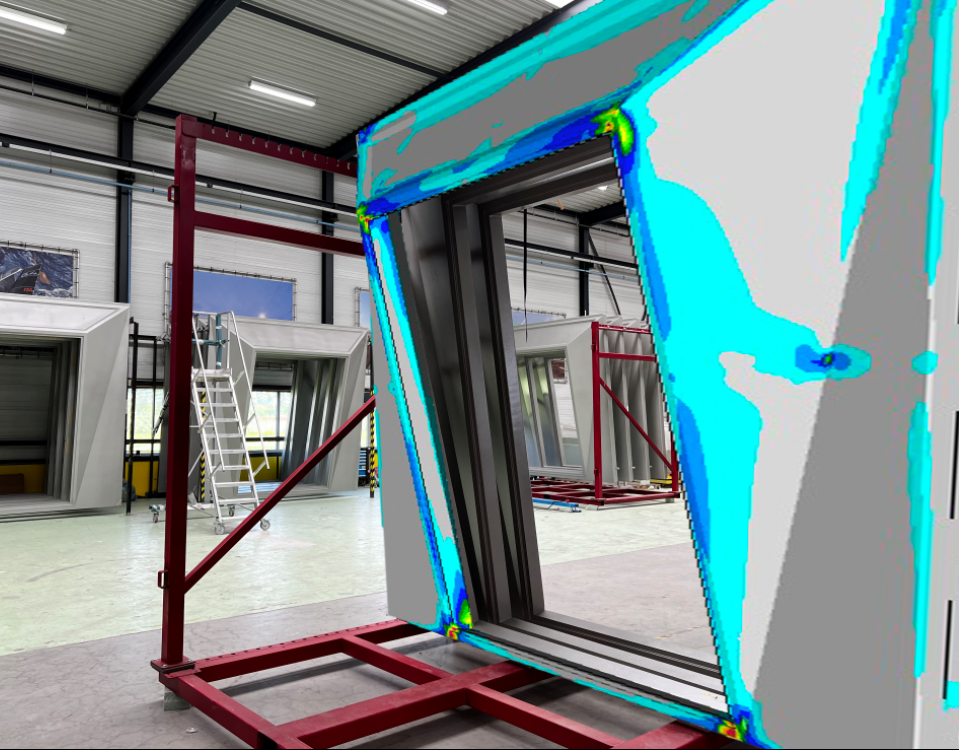Solico’s latest collaboration with long-term client Holland Composites represents a new milestone in the application of sustainable engineered composite structures in the architectural sector. Solico has engineered the new 14,000m2 Duplicor® façade for the Pulse of Amsterdam – a high-end mixed use project containing work, living and leisure spaces in the heart of the city’s Zuidas business district – that has been built by Holland Composites for façade contractor De Groot & Visser.
For many years, developers, architects and civil engineers have been searching for a material solution that delivers the free-form design possibilities, low weight and minimal maintenance of composites whilst also meeting their cost, fire resistance and sustainability targets. Now, Duplicor, the bio-based, fire-resistant, lightweight and low CO2 composite solution from Holland Composites appears to have changed the game completely.
Though Solico has decades of façade engineering experience, with Duplicor being an entirely new composite material, this project required a little more preparation than normal before the engineers could get to work. Fortunately, Solico’s close technical relationship with Holland Composites allowed them to support a full program of testing during the multi-year development of the innovative new Duplicor material technology. At its in-house test laboratory, Solico carried out a full program of mechanical testing to define key strength and stiffness characteristics as well as interlaminar shear, bolt bearing strength, bonding and ageing factors.
With material properties in place, Solico engineers began analysing the initial façade module geometry supplied by Holland Composites. The Pulse façade, designed by MVSA Architects, features around 1,100 composite elements in total, each measuring around 3.6 x 3.8 metres. Each module type – Holland Composites used 17 different moulds in total – was planned to use a composite front and rear skin that would be laminated using Duplicor bio-based prepregs reinforced with heavyweight stitched multiaxial biax and 0-90˚ glass fabrics. The two skins would then be bonded together to form the picture frame style modules that cantilever progressively further outwards towards the top of the building.
Due to the building’s urban position and neighboring structures, scale model wind tunnel testing at Peutz Netherlands was used to validate the wind loads for the Pulse façade. Data from the testing at Peutz confirmed the façade modules must withstand significantly higher wind loads than a standard façade, as well as supporting the weight of the glazing units and solar panels mounted on their upper sections. Solico quickly identified the need for additional shear bulkheads to support the composite skins and thicker PET core sections in some of the sandwich sections, in addition to checking the inserts and mounting points for the aluminium window frames.
Solico’s project scope also included additional testing as the project moved to the production phase. The Solico lab technicians carried out validation test work on sample laminates from production panels, the joint strength achieved with the bonding paste used to join the module skins, and also a confirmation of the bolt bearing strength of the solar panel mounting frame fixings in the sandwich cored module skins.
“All of the testing we have done for Holland Composites and De Groot & Visser confirms that the new Duplicor technology is a unique composite solution,” said Eric van Uden, Managing Director, Solico and Project Lead for the Pulse. “We can see enormous potential for Duplicor in a wide range of construction applications, as the combination of structural performance, fire properties and cost it offers is something we’ve not seen before in a lightweight composite – yet alone a sustainable 100% bio-based one.”
“Having a partner with Solico’s expertise supporting us throughout the Duplicor development cycle was a massive benefit for Holland Composites. Nobody thought our new material was possible but we were absolutely confident in the Duplicor technology. With Solico’s test results and ageing analysis providing us and our clients with an additional 3rd party verification of Duplicor’s long term mechanical performance, we’re ready to revolutionise the architectural composites market forever,” said Sven Erik Janssen, commercial director, Holland Composites.



